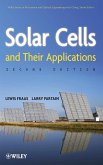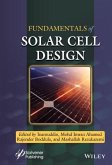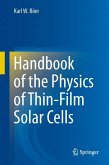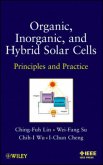Scientists and engineers in academic and industrial research experience a strong evolving discipline: Computational Materials Science. This discipline provides materials insights that are not readily achievable by experiments, and it offers the opportunity to design materials and composites "ab-initio".
This book presents the methods and the practical use of Computational Materials Science using two distinct examples: the development of optimized or alternative materials for CIGS (Copper-Indium-Gallium-di-Selenide) photovoltaics and the optimization of CIGS thin film solar cells for maximum efficiency.
After a general introduction the theoretical background of the book is illustrated:
The strategies and principles of High Performance Computing (HPC) for materials science are covered and rounded out by a number of examples for highly parallel computing.
Next theory and working principles of solar cells are depicted with emphasis on CIGS.
Finally the theory of the quantum mechanical simulations (Density Functional Theory, Monte Carlo simulations for canonical and grand-canonical ensembles, cluster expansions) and the software used for these purposes are presented.
In the practical section of the book the simulation work for the various functional layers of the CIGS cell is described in detail:
After general electronic structure calculations for the CIGS photo absorber light is shed on the role of the Indium/Gallium distribution as well as on the influence of vacancies in chalcopyrite structures.
Base requirements for the buffer layer are defined and simulation results from a search for alternative (Cadmium-free) buffer compounds are presented. Experimental results for synthesized replacement materials complete this part of the work.
The optimization of the system transparent conductive oxide (TCO) / contact grid for maximum overall cell efficiency is described. The charge transport through TCO/grid ismodelled by a Finite Element Method and cell efficiencies are calculated considering ohmic as well as optical losses.
The last section of the book outlines the simulation results implications on the optimization of thin film cell processing. Special emphasis is placed on the influence of process temperatures on film homogeneity and cell efficiency as well as on the requirements for substrate selection. The calculations are validated by experimental results.
This book presents the methods and the practical use of Computational Materials Science using two distinct examples: the development of optimized or alternative materials for CIGS (Copper-Indium-Gallium-di-Selenide) photovoltaics and the optimization of CIGS thin film solar cells for maximum efficiency.
After a general introduction the theoretical background of the book is illustrated:
The strategies and principles of High Performance Computing (HPC) for materials science are covered and rounded out by a number of examples for highly parallel computing.
Next theory and working principles of solar cells are depicted with emphasis on CIGS.
Finally the theory of the quantum mechanical simulations (Density Functional Theory, Monte Carlo simulations for canonical and grand-canonical ensembles, cluster expansions) and the software used for these purposes are presented.
In the practical section of the book the simulation work for the various functional layers of the CIGS cell is described in detail:
After general electronic structure calculations for the CIGS photo absorber light is shed on the role of the Indium/Gallium distribution as well as on the influence of vacancies in chalcopyrite structures.
Base requirements for the buffer layer are defined and simulation results from a search for alternative (Cadmium-free) buffer compounds are presented. Experimental results for synthesized replacement materials complete this part of the work.
The optimization of the system transparent conductive oxide (TCO) / contact grid for maximum overall cell efficiency is described. The charge transport through TCO/grid ismodelled by a Finite Element Method and cell efficiencies are calculated considering ohmic as well as optical losses.
The last section of the book outlines the simulation results implications on the optimization of thin film cell processing. Special emphasis is placed on the influence of process temperatures on film homogeneity and cell efficiency as well as on the requirements for substrate selection. The calculations are validated by experimental results.








